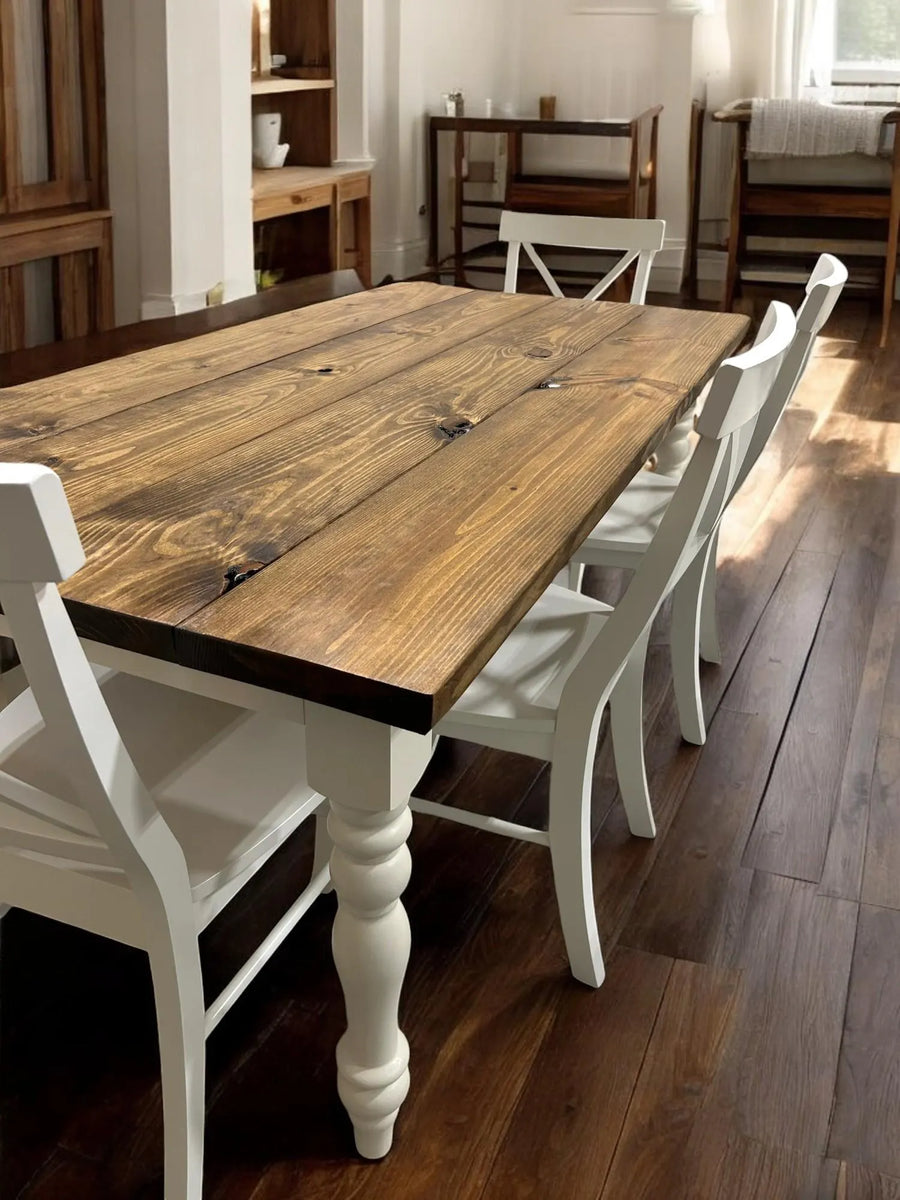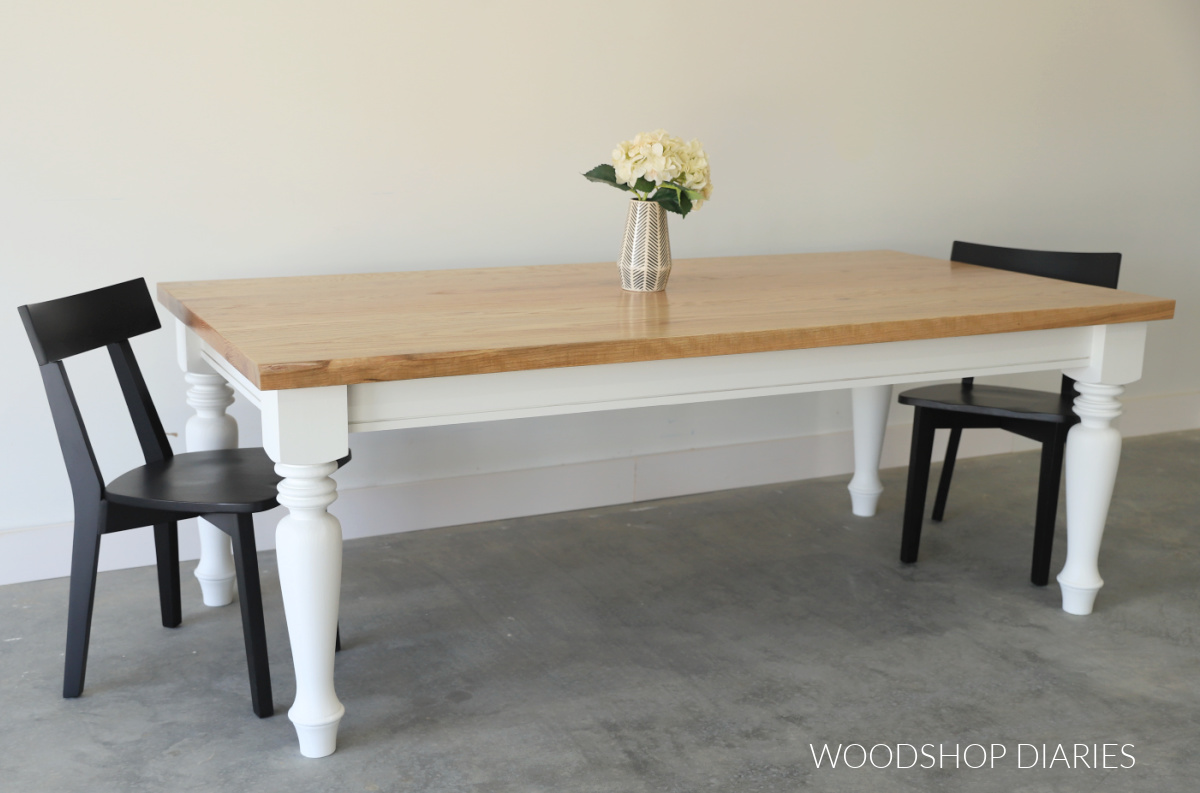Create Spectacular Furniture with Elegant Dining Table Legs Wood Choices
Create Spectacular Furniture with Elegant Dining Table Legs Wood Choices
Blog Article
Exploring the Various Sorts Of Table Legs Wood for Your Eating Area
The choice of dining table legs timber can greatly impact both the aesthetic and useful high qualities of your eating space. Solid wood choices, such as oak and walnut, give a classic look with unrivaled longevity, while crafted wood alternatives provide ingenious designs that mimic the splendor of natural grains.
Strong Timber Options

Furthermore, strong timber is renowned for its toughness and longevity. Unlike engineered materials, solid timber is much less vulnerable to bending and damages over time when correctly preserved. This makes it an excellent choice for households or those that often hold gatherings. Each piece of solid wood is special, showcasing specific features that include in the charm and character of the dining table.
Additionally, strong timber can be ended up in various means, varying from all-natural oils to discolored finishes, allowing homeowners to personalize their furnishings to match their style. In recap, choosing solid timber for eating table legs not only guarantees structural honesty yet likewise improves the aesthetic appeal of the dining location, making it a beneficial investment for any kind of home.
Engineered Timber Alternatives

Plywood, built from multiple layers of timber veneer, is stable and specifically solid, making it an outstanding selection for dining table legs. Its split structure allows it to withstand adjustments in moisture and temperature much better than conventional solid timber. MDF, on the other hand, uses a smooth surface for paint or veneering, enabling designers to accomplish a refined appearance while preserving architectural stability.
When choosing crafted timber choices, it is important to think about the designated usage and preferred visual. These products not just improve the performance of eating rooms yet additionally permit for better layout adaptability, ensuring that traditional and contemporary designs can exist side-by-side sympathetically.
Reclaimed Timber Features
Recovered wood offers a distinct blend of sustainability and character, making it an increasingly preferred selection for eating table legs. Sourced from old barns, manufacturing facilities, and other frameworks, redeemed timber symbolizes a history that brand-new products just can not replicate. Each item brings its own tale, marked by distinctive blemishes, knots, and varying grain patterns, which contribute to a table's unique visual charm.
In addition to its visual beauty, recovered wood is an eco-friendly choice. By repurposing previously made use of products, it decreases the demand for brand-new lumber, thus helping to preserve forests and minimize waste. This straightens with a growing customer preference for lasting methods in furniture.
Furthermore, redeemed wood is usually extra resilient than freshly gathered timber because of its age. The all-natural drying procedure that recovered timber goes through cause a denser and stronger product, making it less prone to warping and splitting. This boosts the longevity of eating tables, enabling them to endure the rigors of everyday use.
Softwood vs. Wood
When choosing eating table legs, comprehending the distinctions between softwood and wood is essential for accomplishing look here both useful and browse around this web-site aesthetic objectives. Softwoods, stemmed from coniferous trees, such as want and cedar, are identified by their lighter weight and ease of control. They typically display an even more rustic look, making them suitable for laid-back or country-style dining spaces. Softwoods are generally less long lasting than woods, which can be a factor to consider for families or those seeking longevity in their furniture.
On the other hand, hardwoods, sourced from deciduous trees like cherry, oak, and maple, are renowned for their thickness, toughness, and durability. The intricate grain patterns and rich hues of woods provide a classic and innovative allure, making them excellent for formal dining setups. While woods have a tendency to be a lot more costly and heavier, their resilience versus deterioration commonly validates the investment.
Ultimately, the selection in between softwood and hardwood for eating table legs must line up with your design vision, use needs, and spending plan, making certain that your dining room reflects your personal design while continuing to be useful over time.

Coatings and Treatments
The aesthetic charm and durability of dining table legs can be substantially enhanced through different surfaces and therapies. These procedures not just protect the timber from damage however likewise raise its appearance, permitting it to complement diverse interior designs.
One typical treatment is staining, which permeates the wood and improves its all-natural grain while adding shade. Discolorations offer an abundant, classy appearance, enabling property owners to match their furnishings with existing decoration. Alternatively, clear finishes such as polyurethane or varnish create a protective layer without altering the wood's initial hue, ensuring toughness versus damage.
In addition, all-natural oils, like tung or linseed oil, nourish the wood and supply a subtle sheen, all while being environment-friendly. These oils permit the surface area to take a breath, avoiding wetness accumulation and possible warping.
For those seeking a rustic appeal, weather-beaten or distressed finishes can be put on create an aged look, adding character to the piece. Ultimately, the choice of therapies and surfaces depends on individual preference, desired aesthetics, and the particular timber kind, making it necessary to think about these variables when choosing dining table legs for your area.
Verdict
To conclude, the selection of table leg materials considerably influences both the functional and aesthetic facets of a dining room. Strong woods, crafted alternatives, and reclaimed choices each deal unique benefits, satisfying different preferences and needs. Recognizing the distinctions in between hardwoods and softwoods, in addition to appropriate finishes and therapies, permits informed decision-making. Eventually, the option of timber type need to line up with wanted design, resilience, and environmental considerations, boosting the total eating experience.
The selection of dining table legs have a peek at this site timber can exceptionally affect both the functional and aesthetic high qualities of your eating space - Dining Table Legs Wood. Strong wood options, such as oak and walnut, provide a classic look with unrivaled sturdiness, while engineered timber options supply cutting-edge designs that mimic the richness of natural grains. Strong timber offers a classic high quality that can raise the general style of an eating room. Each piece of strong wood is unique, showcasing individual attributes that add to the appeal and personality of the dining table
Additionally, redeemed timber is typically extra long lasting than freshly harvested wood due to its age.
Report this page